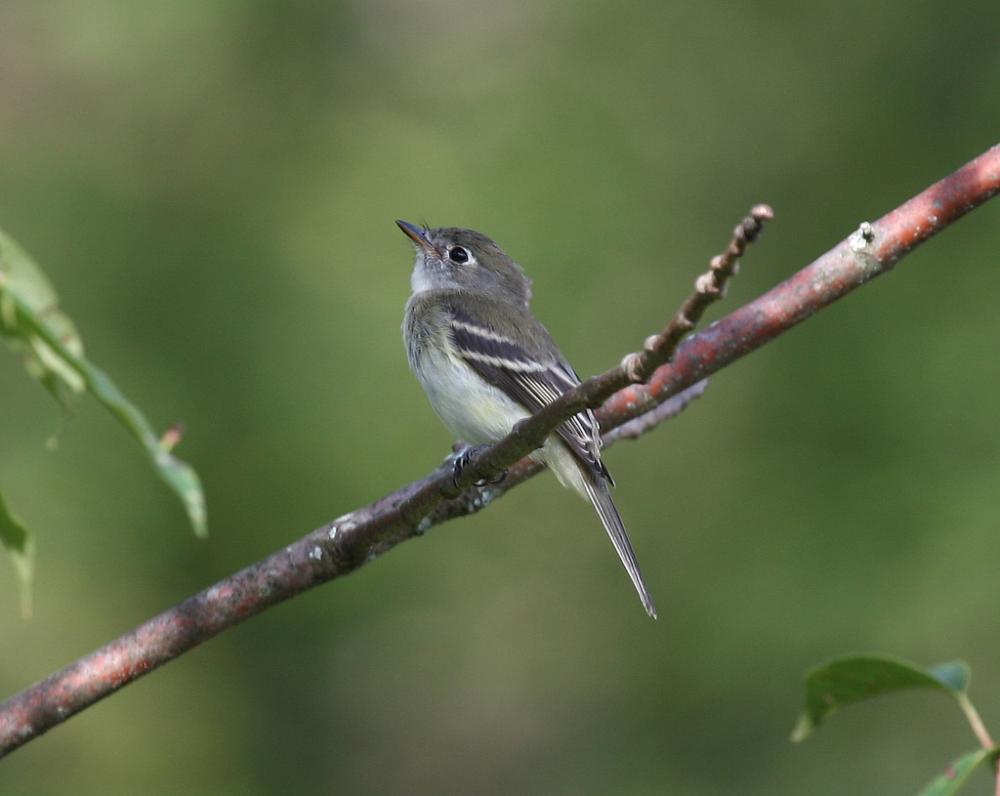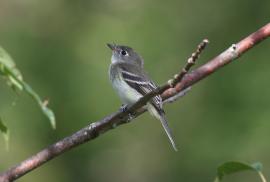Guide to Boreal Birds
Overview
Perhaps the most familiar member of the difficult-to-identify Empidonax group, the Least Flycatcher is a characteristic bird of large shade trees; its presence is most easily detected by its call. An incubating bird is surprisingly tame and will often allow itself to be touched or even lifted off the nest.
Description
5 1/4" (13 cm). Dull olive-gray above, whitish below, with 2 whitish wing bars and conspicuous white eye ring. Distinguished by voice and breeding habitat.
Voice
Dry, insect-like che-bec, snapped out and accented on the second syllable, and uttered incessantly through the hottest days of summer.
Nesting
4 creamy-white eggs in a finely woven, cup-shaped nest made of vegetable fibers and lined with grass and feathers, firmly wedged in the fork or crotch of a tree.
Habitat
Widely distributed in open country, nesting in shade trees and orchards in villages and city parks, and along rural roadsides and woodland borders.
Range/Migration
During winter, this flycatcher is most common in coastal Central America. On the Pacific slope, it prefers wooded ravines, while on the Caribbean side it is more often encountered in dense brush and wooded edge habitats. For a flycatcher, it migrates north relatively early, reaching its breeding areas in the northeastern states in late April. This early movement may in part be a result of this flycatcher's ability to subsist on relatively small insects, but may also be related to the extreme degree of territoriality it demonstrates on the breeding grounds. While most songbirds molt before leaving the breeding area, Least Flycatchers molt after migrating south in the fall. This delay in molting may help them reach their winter habitat and establish territories more quickly.
Breeds from southern Yukon east to central Quebec and Maritime Provinces, and south to Wyoming, Indiana, and New Jersey, and south in mountains to North Carolina. Winters in tropics.



